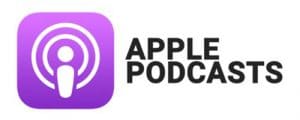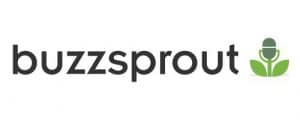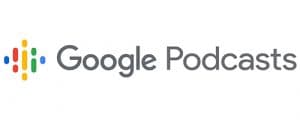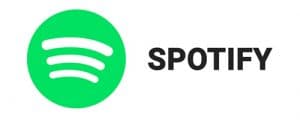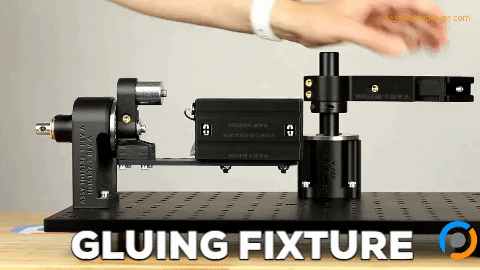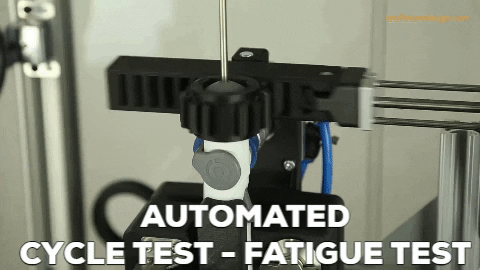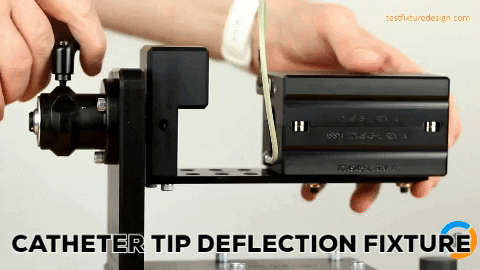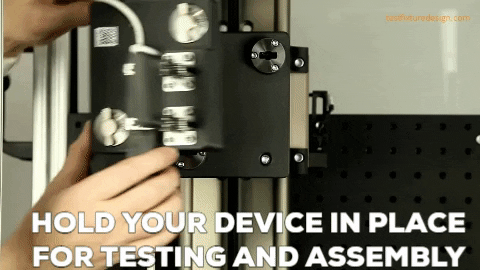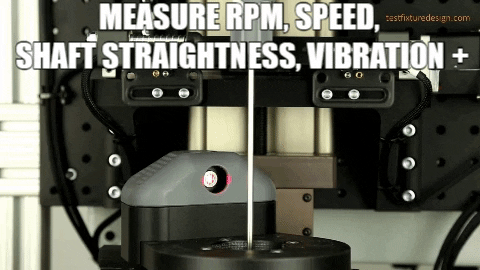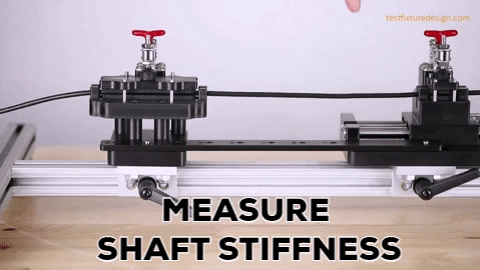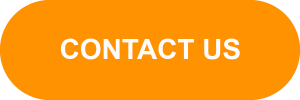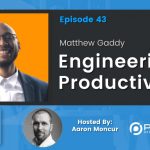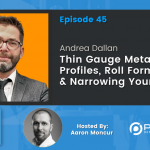Joseph Larsen | Joko Engineering How I Met My Mechanical Engineering Mentor on YouTube
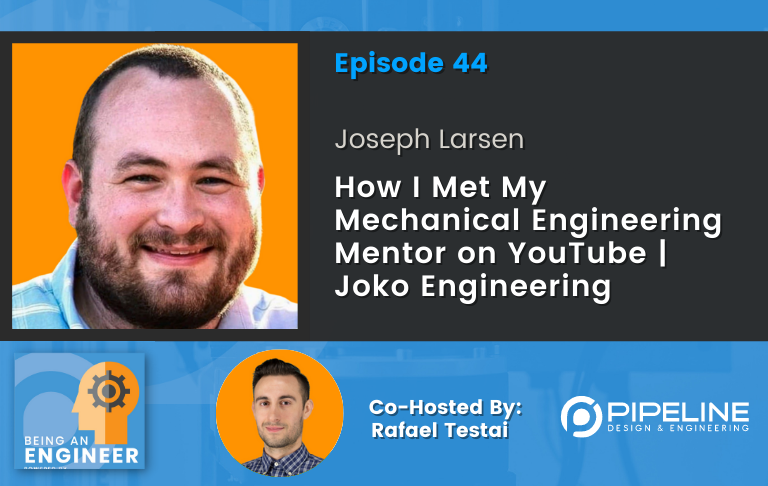
Who is Joseph Larsen AKA Joko Engineering?
Joseph Larsen runs an Engineering YouTube channel called Joko Engineering with over 32K followers, in which he covers tutorials on SolidWorks, FreeCAD, Calculus, Engineering, Turbocharging dynamics and more. In addition, he also works as a Medical Device Handle Design Engineer at W. L. Gore & Associates. He graduated with a BS in Mechanical Engineering from Arizona State University.
Rafael, our co-host, met Joseph via YouTube when he was looking for resources to pass the SolidWorks CSWP exam. Little did they both know, that they both lived in Phoenix, Arizona.
In short, listen to this episode to learn all more about Joseph!
Joseph on LinkedIn: https://www.linkedin.com/in/joseph-larsen-74786a72/
EXPAND TO VIEW EPISODE TRANSCRIPTION
SUMMARY KEYWORDS
people, solidworks, cad, handle, engineer, work, great, free, design, medical devices, learn, engineering, youtube channel, content, call, injection molding, youtube, medical, good, analysis
SPEAKERS
Aaron Moncur, Joseph Larsen, Rafael Testai
Joseph Larsen 00:00
The being an engineer podcast is a repository for industry knowledge and a tool through which engineers learn about and connect with relevant companies, technologies, people, resources and opportunities. Enjoy the show. There could be some young or prospective engineers that are listening. And if so, I would say, go for it. I was selected to be an engineer over people that were more qualified than me. And it was because I smiled, I was as pleasant as I could be. And they chose me because I could add with my personality.
Rafael Testai 00:53
Hello, everyone, welcome to the being an engineer show today, I have a very special guest, a mentor of mine. His name is Joseph Larsen, aka Joko engineering, and I’ll explain that in a moment. I’m your co host, Rafael Testai. Today we’re doing something a little bit different. We’re doing not only a podcast, but also a video call. So we’ll have the link to the video call if you want to see our faces, and you want to see some of the PowerPoint slides that we’ll be sharing. It’ll be just in the description below. I know a lot of people like to listen to the podcast driving like myself. So you’re only going to miss out about 5% of the whole show. If you don’t watch it. So 95% of the content will be auditory. So you’re fine if you just want to listen to it. So Joseph, welcome to the show.
Joseph Larsen 01:39
It is great to be here. It’s it’s an absolute honor.
Rafael Testai 01:42
Thank you. So let me set the frame of the whole conversation in the podcast. I want to tell our audience how we met and how this all started after quickly introducing you. So Joseph has a huge YouTube channel. He has 32,000 subscribers. As you can see from my screen, those of you that watching the video, someone phase videos have over half a million views. So he’s been pretty successful at the YouTube thing. And his YouTube channel. He has tutorials on SolidWorks, free CAD calculus, engineering, turbocharging, dynamics, and more. He has a Bachelor’s of mechanical engineering from Arizona State University, and he is a handles design engineer at WL gore and Associates. So let me set the frame here. This is how we met our interesting story. I was trying to get my CSW P SolidWorks. Certification SolidWorks is basically a CAD program and the CSW P is one of the most important certifications that you can get for it to show employers and everyone else that you’re proficient in SolidWorks. So I was browsing YouTube, like many of you have done before, and looking at all these different tutorials. And some of the best tutorials came from this YouTube channel called Joko engineering to be specific. It’s called Joko engineering help. So I watched a couple of tutorials. And I thought to myself, I want to reach out to the the owner of this YouTube channel to see if we can make a personal connection and just simply tell him that I really appreciate his content. So I reached out, he emailed back right away. So I was surprised, because so many followers, I didn’t think that he was going to respond. The amount of correspondence human him has received must be outstanding. And we hit it off right away. He was super nice. And we scheduled a zoom call a video call. And the chemistry was there. He became my mentor. And I then find out that he also lives in Phoenix like myself, like what are the odds, right? Like, I’m looking for SolidWorks content, and we both live in Phoenix, we’re basically neighbors. And in conclusion, I just wanted to say that I feel like I’m blessed. I seem to come across great people, I attract great quality people. And I’m very thankful that the universe has done this that God has done this for me. And I’m very happy to be talking to Joseph today. So welcome to the show. And here. I’m going to ask you a couple of questions about let’s see, first let’s start off with W L gore. Your the company that you work at, it says that you’re a handles design engineer. Could you explain what that is?
Joseph Larsen 04:27
Yeah, that’s That’s right. And thanks again, Raph. It’s, it’s really great to be here. So at WL Gore, you probably know Gore from Gortex. They can make jackets that will breathe with air going through them but they won’t let water through. It’s a material science company and I work in the medical division. So the same technologies that are applied with these jackets can create materials that work with medicine, particularly with intravascular surgeries. And I work certain handles that can run catheters through veins and parts of the body to allow access into places that are, would otherwise be very, very invasive. So these materials with what we call E PTFE, as a material, allow people to recover from certain injuries and health problems a lot more quickly and easily than with other solutions. So specifically, I design medical handles that work mechanically, to run certain catheters and delivery systems.
Rafael Testai 05:38
So when you say medical handles, does that mean, the handle that one uses to hold on to the device? Is that what a handle is?
Joseph Larsen 05:46
Yeah, good question. If you have seen as sometimes you see it a lot in movies, intravascular surgeries, where you have a physician holding on to device as a big catheter on it. And they’ll steer the catheter through veins in this, this handle has certain controls on it that allow the catheter to be steered in multiple directions. Right? That would be a medical handle, if you’ve it, if that makes sense to viewers.
Rafael Testai 06:16
Okay, so something that your hand is going to grasp onto is all right,
Joseph Larsen 06:21
that’s right. Yeah. So
Rafael Testai 06:25
forgive for my ignorance. But let’s see, I’ve done a couple handles before on SolidWorks. Some may need surfacing some other others may not. How complicated could a handle be?
Joseph Larsen 06:38
I’ve seen, in fact, some of the most complex models that I have dealt with have been handled models. In all of my time and engineering. They can get really complicated. Yeah. When you
Rafael Testai 06:52
design a handle, do you design it, so it’s, it conforms to the fingers, like it has the little ridges for each finger or now
Joseph Larsen 07:01
we don’t ergonomics and certain elements of how it’s designed are really, really a big deal. But I haven’t seen handles with any kind of finger contours. It’s more a concern of, can you look at this handle and intuitively know how it works. You know, in a situation where someone’s life is at stake in a say, in a surgery, you want to be as simple as possible. And part of that is having very simple kinds of curvature and things like that. So.
Rafael Testai 07:39
Okay, so I guess that’s your specificity, right? Handles for medical devices. Right. All right. This is very interesting. We haven’t had someone on the show with that specificity. Let’s see. What should an engineer that maybe works on medical devices, know about handles, if we don’t specialize in that? Couple things?
Joseph Larsen 08:02
What should an engineer know about handles? If they don’t specialize in it? That’s a great question. And I think it depends on what the surgery is for, you know, even something like surgery on the heart can vary. So, so much from a surgery on, say, an aorta, or other part of the body, I would say, as ergonomic as possible, at all times, you want the physician to be able to grasp the handle in a comfortable way, that doesn’t lead to any kind of fatigue. Because some of these surgeries can take a long time, some of them can be a short time, you want to be able to make the handle in a way that you have a lot of safeties, you don’t want to accidentally hit a button at the wrong time and have something happen that would endanger the patient. So consider a lot of safety interlocks and consider making things work with as few steps as possible.
Rafael Testai 09:01
Okay, a couple of things that go through my mind, we have the same hands, my handles may change. If one handle works for a specific medical device, then why not use the same handle for the other medical devices?
Joseph Larsen 09:14
That’s an excellent question. And I think it goes into consolidation. I think you find that especially with, I think most medical handles, you’d say are injection molded. And the tooling for injection molding is so expensive. There’s tons of opportunity to be able to consolidate parts if possible, because if you pay 1020 grand for tooling, you want to use that as much as you can. Right. So I I would say the only reason for not doing that is if you have a particular functional problem with using handles and in our case, there’s a lot of times when you have a completely different implant or something else that you have have to deploy. And it’s just proven. You can’t do it just on the basis that the implants are incompatible. Does that make sense?
Rafael Testai 10:11
Yeah, I’m I’m a super visual person, it would be extremely helpful if you can maybe pull up an image from Google, and maybe like hover your mouse over the area you’re referring about. And we will be as descriptive as possible with our language so that people at home just listening to the audio can can follow along. What do you think about that?
Joseph Larsen 10:28
Yeah, that sounds great. Okay, I can find a handle for you. For sure. I think I’ve got a really good one here, I’m just grabbing a second one, take it away, you can see that you have a handle with a knob sticking out on it. And you would twist that knob, kind of like you’re opening a jar of pickles, if you think about the ergonomics on that. Whereas below, you have an Edwards handle. And the difference would be that you have a knob built into the side of the handle. And you would kind of move that the same way you would scroll the wheel of a mouse. And this is the same function, you’re turning something but the ergonomics are very different. And it leads to a different experience when you are performing the surgery. So when we evaluate a design of a handle, it is really important to understand the voice of your customer and know what is the best to do when sometimes opening a pickle jar kind of ergonomics is way more effective than twisting something that’s in your hand like the wheel of a mouse. But other times, that’s not such a great solution. So these are all factors that should be weighed when designing a handle
Rafael Testai 11:47
Excellent. Yeah, I’ve never had a such a close look like this or paid such close attention to the handle of a medical device. Usually, the focus seems to be where it’s cutting the tissue, or where the motor is, but the handle is absolutely instrumental. If one gets tired from handling the device, it can be dangerous. So very cool. Okay, so what’s your favorite thing about your job?
Joseph Larsen 12:16
That’s a great question. You know, Corps is such a wonderful place to work for. And it’s a great company. They’ve been in the Fortune Magazine, top 100 Places to Work for I don’t know how long but years and years. So that is always great to have a job that treats you very well. But I think I love the freedom of being able to design things from scratch, save projects from cradle to grave, and actually make a difference in helping people’s health improve.
Rafael Testai 12:51
And tell us a little bit about your YouTube channel that has 32,000 subscribers. How did all that start out? And how did you keep on growing it?
Joseph Larsen 13:01
Yes, yes, that was a funny story. I was a student at ASU poly tech. And I was pursuing my degree. And I really, really wanted to learn CAD. And interestingly enough, with a degree program at the time, there was just not very much CAD to take that would have helped my degree. The accreditation, I think was set up for different kinds of education. So I was able to take one CAD class and it was half GD and T. It but from that half CAD class, I learned how to like fully defined a sketch and do simple assemblies. And that got the ball rolling, rolling for me so that I could be able to teach myself how to do a lot more. And almost everything I’ve done with CAD is self taught. And every time I learned something new, I would put it on the YouTube channel. And it was almost out of spite that I wanted to do it better than my university did for other people. So I wanted to make it accessible. And hopefully people would enjoy CAD the way that I have. It’s been quite an interesting journey, because I didn’t actually expect it to get very washed at all, but looks like people are following it enjoying it. So it’s turned out to be pretty interest. Yeah,
Rafael Testai 14:23
when when you actually gave me a lot of pointers on how to pass the CSW up that I passed with 100% in large part, thanks to you, once you give me all that content and those tips, I made my own YouTube video to help other people pass that CSW p test. And every week I get messages on LinkedIn people thanking me for putting that content out there. So I just want to relay that on to you because I don’t think I ever told you that. So thank you. Thank you for passing that knowledge to me.
Joseph Larsen 14:50
Oh, thanks, Raph. Yeah, you know, it’s kind of like limb is Rob that story of Shawn Ville. John. We’re loving kindness is just kind of infectious and it spreads almost like a disease, but in a good way, you know, it’s really wonderful to see how many people in the world like you are willing to help others and do so even for no benefit of yourself other than just being able to help. So it’s really inspiring to see what’s happening across YouTube and LinkedIn and all these different places.
Rafael Testai 15:21
Absolutely. And in your YouTube channel lately, you’ve been talking a lot about free cat. Could you give us an introduction as to what is free cat? And why is it useful? Anything you might want to share about that software?
Joseph Larsen 15:34
Oh, free cat is a lot of fun. It was the second platform I learned after SolidWorks. And it was a little bit of a steeper learning curve for me, I think, because I just got used to doing it one way. But when I figured out just workbenches and all the nuts and bolts, it became a really fun and accessible and easy to use software that is, surprisingly so powerful. There is not that much. I can’t do on free CAD, that I can also why can’t do on SolidWorks that I couldn’t also do on free CAD. I think it’s a great way to learn. And I would recommend anyone to learn multiple platforms, because you can pick up so much on you know, what’s going on behind the scenes with solid modeling. Free CAD, for instance, will call something for net, whereas SolidWorks would say normal to curve. And when you start saying, hey, what’s what’s for net, when you do a sweep that stays normal to a curve, you know, you start to realize, oh, there’s for net equations that are starting to drive the geometry behind this and you, you kind of learn little bits and pieces from just even terminology. So free CAD is an open source software, but it’s also known as free to use, so you can reprogram it yourself. And it’s a very open license. And I love the community effort behind that. And behind being so accessible, I have a lot of respect for people who are so generous and making things free to use and free to view the source code. So yeah, I’m probably giving you too long of an answer. But it has just been totally inspiring to be able to use free CAD that’s kind of built on community and generosity.
Rafael Testai 17:23
Yes, I agree. Freecad. But at the same time, I’m thinking a lot of people are listening may only know one software CAD package like myself, I only know SolidWorks. And it was a steep learning curve learning all the bells and whistles, all the terminologies like you said, now I’m finally at a place that I feel comfortable with SolidWorks and designing what I have in my mind, and I can do it quickly. Why do it all over again, with another software? Basically what you said, just learning different terminologies and see what’s going on behind the scenes. What else did you learn about behind the scenes from learning Freecad?
Joseph Larsen 17:56
Yeah, I love that. Freecad has taught me a lot about analysis. So the FTM workbench, it’s the same idea behind running as an analysis and free CAD and running one in SolidWorks. But, of course, the the analysis and package in SolidWorks isn’t cheap. So if you don’t have access to SolidWorks analysis, free CAD is a great alternative to learn the process. And it’s you can run thermal analysis as well, which I found to be so interesting, because I haven’t really done that in SolidWorks. You can I just haven’t done it. And you know that that in itself has really opened up a lot of possibilities in just making complicated things accessible. And in fact, a developer has reached out to me on my YouTube channel and is developing further analysis capabilities. And I’m just starting to, to get into that. So there’s a there’s even more content coming for free cat.
Rafael Testai 18:56
So did you say that in Freecad, you can actually edit the software there. I hear you say that right?
Joseph Larsen 19:02
That’s right. Yeah, it’s open source. And so you can get on GitHub and make your own version. In fact, there’s two versions right now that I think in free cat version 20 is going to merge the fork again between some main developments that happened between real Thunder and the main Freecad. So there’s there’s some really exciting stuff happening right now.
Rafael Testai 19:28
What would you say is the biggest downside of Freecad?
Joseph Larsen 19:32
Yeah, that’s a great question. You know, the number one gripe that I hear in the comments is that the user interface isn’t intuitive for people. And so to an extent that can be in the eye of the beholder because it feels like I’ve used it so much that just is second nature, you know. And I think the main driver behind those comments is Freecad user interface can be steep to learn initially, but it makes sense once once you start using it in my opinion.
Rafael Testai 20:07
I see, I think right now is a good time to take a break and tell our listeners that that being an engineer podcast is brought to you by pipeline design and engineering pipeline partners with medical and other device engineering teams who need turnkey equipment such as cycle test machines, custom test fixtures, automation, equipment, assembly jigs, inspection stations, and more. You can find us on the web@www.pi Team pipeline.us. And we’re here with Joseph Larsen, aka Joko engineering. And I wanted to ask you, we were talking about free CAD, and maybe learning another platform for all of our SolidWorks users. And why that may be a good idea, who tends to be the general audience that uses free CAD inventors, right?
Joseph Larsen 20:55
Yes, I’ve had both inventors and hobbyists reach out, I’ve been able to help some people with some of the work they’re they’ve been doing. And there’s a lot of smart people using Freecad. And as well, I get a lot of comments from hobbyists when fusion 360 changed their license structure. A lot of people moved into Freecad and found a happy home there. So you get a wide variety. I see a lot of inventors, a lot of hobbyists and a lot of people who may have otherwise have had trouble with the accessibility of other platforms, either by price or anything else, have been able to make some pretty incredible things on free CAD.
Rafael Testai 21:33
I’m naturally a curious person, and I can’t help I wonder if there’s a product in the marketplace right now. That was built primarily using free CAD as the CAD package.
Joseph Larsen 21:45
Yes, I know of a few. I know that some furniture companies have actually made some coffee tables primarily with Freecad. And I think during COVID-19, I know of some medical shields to you know, restrict airflow. Were also designed in Freecad. I’m sure that there’s a lot more out there. I just haven’t dealt with them.
Rafael Testai 22:10
I see. So I guess we’re free CAD, you can also design the tooling for injection molding. Is that possible? No.
Joseph Larsen 22:17
It is. Yeah. And I don’t know if it’s commonly used in injection molding, particularly, I think free CAD has some potential in having more Phillip capability. And with injection molding fillets are so important. So I don’t know if too many injection molders use it. But it is possible to run a boolean and make tooling pretty easily.
Rafael Testai 22:45
So have you ever brought it brought free cat to the attention of your manager or colleagues and say, Hey, guys, we should do a project in Freecad. Have you done that before now?
Joseph Larsen 22:56
A little bit, you know, free cat is awesome for things like gears, because you can choose your own diametral pitch number of teeth, everything you want to about a gear and it just generates the gear immediately. And it’s it’s really great tool. So I’ve I’ve drawn attention to it. But I think with the way that certain files are organized in the file systems we have to use, it’s really built around SolidWorks. And so there may not be too much opportunity, but I have used it in past jobs. I worked in heavy duty diesel and Indiana. In fact, I’ve got the Indiana flag behind me because I I love that area. And I really miss it. But we I feel some heavy duty diesel aftermarket parts for diesel oxidation catalyst and particulate filters and Freecad was great. It did everything we needed.
Rafael Testai 23:44
Okay, what are some of the biggest challenges you face?
Joseph Larsen 23:48
That’s a great question. Would that be in the scope of the work that I do every day?
Rafael Testai 23:53
Yeah, let’s start out with that. And let’s talk about you too. After that.
Joseph Larsen 23:57
I think one of the big challenging aspects of working in medical is you know, someone’s life is depending on the product that you’re making, and you want everything to be as ideal as possible. And finding a balance between how much detail is realistic to add. And being able to actually progress on a realistic timeline can be a little bit challenging. I think there’s a lot of prototyping and a lot of testing that is involved with medical devices. And having confidence in everything that you’ve built and make sure that you’ve proved it out, can be not only extremely important and satisfying, but you want to make sure that you’ve tested it enough and validated it enough. It seems like always something goes wrong on test day, which is an inherently great thing. You just don’t want that to happen to a patient you know.
Rafael Testai 24:54
Love that mindset is very positive. What’s what makes you lived hard on YouTube, like, what’s something about the YouTube platform that you wish were different? Maybe? Yeah, that’s
Joseph Larsen 25:07
great. You know, I, I’ve really enjoyed working on YouTube. And it’s been able to, it’s enabled me to reach people that are exceptional human beings, people like you. People like inventors, and hobbyists, and other engineers that are out to make the world a better place. Working on YouTube can be a little bit stressful when you see all of the the D monetization and other limitations that happen depending on the content that you put out. And so I always want to be mindful to be quite politically correct. To make sure that I can remain accessible, and help as many peoples as I can. So that can be kind of a stressful thing. Sometimes you get people who are extremely negative. And it’s really gotten me to get used to just shrugging people off and realizing some things don’t matter.
Rafael Testai 26:03
How can someone be extremely negative about the content that you provide? You’re showing people how to do stuff on CAD and giving some advice. I can’t find anything negative about them. Sorry.
Joseph Larsen 26:16
I like that. Yeah, that’s a good perspective ref. I would say, I get some people that say that Freecad is junk. I’ve, they’ll say, I’ve tried to do simple things. It just won’t work. This is absolute garbage. Right? He gets some people that make a comment that I should have done this and this and this differently, and showing someone how to do that. That’s a really common one. And you know, if you break down a video, you’re doing probably hundreds of different operations. I am absolutely sure. I’m not doing it the best way all the time, but do my best. So
Rafael Testai 26:53
you should be like, Okay, let me see your video.
Joseph Larsen 27:00
That would be great.
Rafael Testai 27:02
Oh, you should have converted that entity. You should have done a midplane extrusion cool, are you I love that guy police. Would you make a troll account on YouTube called Cat police and just go around? Oh, geez, these guys. Yeah, oh,
Joseph Larsen 27:18
issue some citations of my own? Oh,
Rafael Testai 27:22
my goodness. Oh, monetization. So what are some things for people that don’t really understand how to monetize YouTube videos? What are some things that are CAD, YouTube content creator? Some challenges that you face? When you want to monetize your videos? What are some like gray areas? That sometimes if you don’t do this, you can’t monetize the video?
Joseph Larsen 27:44
Yes, I know, I may be showing my age because I started my channel around 2013 2014 ish. And, gosh, I don’t remember now. But they’ve raised the bar for monetization since then, I know now you have to have, I think 1000 hours watched a certain 1000 subscribers as 1000 subscribers, certain amount of hours watch before they’ll even monetize you. And if you can get to the point where you get monetized, it should be pretty easy. When you’re uploading, you can just check the monetization box after that. It’s when you upload controversial content. And especially if you have something say firearms related or something that has a child in it, and you don’t check the boxes that say exactly what your content is, that can put you at odds with advertising. And and sometimes if people promote extreme things, I think we’ve all seen certain channels get demonetized for what content they upload. So
Rafael Testai 28:51
I’m scared out.
Joseph Larsen 28:53
Does that answer your question?
Rafael Testai 28:54
Yes. But I know that YouTube now has a feature that they can do a transcript for everything you say, I’ve seen that feature before. I think it’s like a chat box or something like that. But if we say the G word, which I don’t want to say it again, that looks like this, then it will appear on the transcript. And then I guess they’ll flag the video, right?
Joseph Larsen 29:13
Yeah, and I don’t know the full part about the G word that might get taken down or controversial. This is gonna be you can still do the hand sign they won’t find that
Rafael Testai 29:32
gonna flag the whole YouTube channel because it’s medical devices YouTube. We’re not talking about that.
Joseph Larsen 29:40
Yes, yes. It’s a different kind of thumbnail now right
Rafael Testai 29:43
handles. We’re talking to my handles. Yes. All right. So another question I have for you is what has surprised you about being an engineer that you didn’t expect before you became one
Joseph Larsen 30:00
He asked the business side of it. When I was an engineering student, I often just fantasize that I would be designing and doing all these cool engineer things. But I wouldn’t have thought that engineering could be so heavy and things like supply chain, and supplier evaluations and doing hardcore business stuff. You know, we didn’t talk about that very much in school. And we just talked about the technical stuff. And so I found that I was continually learning how to do the business side, as I started my career.
Rafael Testai 30:37
You touched on things that you didn’t talk about in college, that you realize when you become an engineer were important. One of them being supplier evaluations, what’s another one? Yeah, supplier
Joseph Larsen 30:49
evaluations supply chain management. Often, the logistics of how many people are working on a project and what the budget of the project is, and how to move talent around and get people what you need while staying within certain budgets.
Rafael Testai 31:06
Okay, let’s just talk about two of those. If we can a supplier evaluations, what does that mean?
Joseph Larsen 31:12
Yeah, that’s a that’s a great question. And it’s something that is done by some engineers that I haven’t gotten to do yet. But it is a lot of evaluating a suppliers capability to meet certain tolerances and evaluating the shipping and logistics and cost of getting involved with supplier and making decisions on who to go with and why. Okay, that’s what
Rafael Testai 31:35
I thought, What about supply chain management? What does that mean?
Joseph Larsen 31:40
Yeah, that’s a great question. Often, when you’re in the prototyping phase, you’ll say I need a few of these parts, and you ordered them and they’re sent to another location that you don’t have access to, or being able to accurately predict how much of something that you need. And this, this is some stuff that you run into, on occasion when you’re just prototyping. But when you’re making actual product, it becomes way more important and even a much bigger deal to know how much inventory to have. And when. And when you look at problems when you’re producing things. And I’m a design engineer. So this isn’t exactly my specialty. But when you have problems producing things, let’s say you have machinery that is going to slow, well, you can fix that with inventory, you can build up all this inventory. So when customers order something, you can backfill your inventory, instead of making on demand but or if you have, you know, problems with having tracking the right quantity of something, to make a product, where you can just over order your parts. And you know, inventory solves all kinds of problems. But the problem with having so much inventory is that you tie up a bunch of cash resources and having stuff that sits on the shelf. And lean manufacturing, five s all these recent trends, even six sigma are focused around how to maximize your process to get as low inventory as possible. So you can use your cash resources into developing other parts of your business that will ultimately pay off better. So supply chain management can be a huge advantage when you get it right. And that also comes down to optimizing process to make sure that you have everything you need, and you’re maintaining your equipment and everything works.
Rafael Testai 33:32
Right now, it doesn’t sound like that’s your main task. You do design engineering. Right?
Joseph Larsen 33:38
Right. Yep. I did that a little bit more in my last position working in diesel, but now I’m pretty heavily a designer.
Rafael Testai 33:46
So right now, I already have my bachelor’s in molecular biology and genetics. And I’m going back to school to get my second bachelor’s degree in mechanical engineering. Because I want to be an engineer that has a degree that’s one of my goals. And I’m taking all the calculus or physics classes. And I want to know down the road where you are, what’s something in physics that you use frequently, maybe almost on a weekly basis, because physics is very broad. What’s something that you you’re going to use that you can tell me, Raph? That’s my nickname. For those of you that don’t know, full name is Raphael. So Raf, what’s one thing that I’m going to be using for sure, once I graduate and if I happen to work at a big company that does medical devices? I don’t know what the future holds. That was something that I’m going to be doing often in terms of physics.
Joseph Larsen 34:36
Yeah, that’s a great question. And it kind of depends on the industry that you go into, you know, I started my job in aerospace. And if you asked me that, at that time, I probably would have said something like thermodynamics, especially if you’re working on the engine side. Then I moved into chemical reactors and there I probably would have said something pressure related doing a lot of pressure calculation. shins, then I moved into diesel. And, you know, just depending on where you go, there’s a lot of principles that that come out, I would generally say, get a great idea of statics and dynamics. I think wherever you go, you’ll probably run into a case where you’ll want to calculate the strength of something. And whenever you do an analysis, of course, you want to have hand crank calculations to back up that analysis and not just rely on, you know, finite element to tell you the answer. So that’s probably a nice generic place. If that answers your question.
Rafael Testai 35:36
Have you ever been in a position where you had to show your hand calculations to support what you just said?
Joseph Larsen 35:43
I don’t think so. And that’s not to say that it doesn’t happen. I just haven’t been in a place where I was being that strictly scrutinized. But there are times when in certain jobs, you you will, especially if you become an analyst,
Rafael Testai 36:00
when you design handles, which is what you do, do you do FAA analysis? Or do you do any kind of force tests?
Joseph Larsen 36:10
We have done FAA analysis? At my company, I’m not part of that group. So the last time I did FAA, as part of a job was doing some pressure vessel calculations and testing. Okay. Yeah.
Rafael Testai 36:26
So when you design a handle, how do you know that it’s going to be able to withstand the pressures? The how the doctor holds eight? How do you know it’s going to hold up?
Joseph Larsen 36:36
Yeah, great question. We don’t see too high forces, that we would generally worry about as far as the handles that I personally have been involved with. But a lot of that is validated in testing, and is on the testing side, I have seen situations get tested that I don’t think would ever happen in real life. But the level of scrutiny warrants that. So you can, in my position, with the projects I’ve been involved with, you can design a handle pretty intuitively to know that it’s going to be strong enough, but the real validation happens in testing.
Rafael Testai 37:16
Perfect. Well, we’re coming here to a close, is there something that we haven’t discussed in this podcast, maybe we should have discussed?
Joseph Larsen 37:25
One thing comes to mind, a bit different flavor that we’ve talked about is there could be some young or prospective engineers that are listening. And if so I would say, go for it. You know, I was the type of engineer that played with Legos and built things and was imaginative and creative. And I can’t say that I was some genius that was, you know, overly smart with math. If you’re like me, there’s a place for you, you know, I often had doubted myself, because I thought if you’re an engineer, you have to be super smart and super good at math. And, you know, I changed my major a bunch of times. And when I settled on engineering, at some points, I felt self conscious that, well, I am with some real geniuses, what can I add that someone else couldn’t. And then when I got my second job with chemical reactors, it turns out, I was selected to be an engineer over people that were more qualified than me. And it was because I smiled. In the interview, I made a joke or two, I was as pleasant as I could be. And they chose me because I could add with my personality. You know, whoever you are, I think there’s probably a place for you in this field, because it takes all kinds of people to make the world go round. And that includes being within the subset of engineering, I think. So if you’re an engineer, you can totally do it.
Rafael Testai 38:58
Wow, what a great way to close what an inspiration and touching on the soft skills and smiling and having a good personality, you play well with others, those of you that are watching the video, they’re gonna see you smile constantly throughout the video, and it’s been a very pleasant experience. Thank you for being on the show. And how can people get a hold of you? They’re interested.
Joseph Larsen 39:18
That’s great. Yes. On my YouTube channel, hopefully there’ll be a link for it. I put my email address in the description. It’s Joko engineering help J Okay. Oh, engineering help@gmail.com. And I try to answer everybody. Sometimes I am not able to, but I do my absolute best.
Rafael Testai 39:37
Exactly. And that’s the same way that he just described how Joseph and I met, I just send them an email out of the blue. And he became my mentor, and he’s on their podcast now. So everyone, thank you for listening. And Joseph, thank you for being on the show.
Joseph Larsen 39:51
It’s great to be here. It’s an honor. Thank you so much.
Aaron Moncur 39:53
I’m Aaron Moncur, founder of pipeline Design and Engineering. If you liked what you heard today, please share the episode. To learn how your team can leverage our team’s expertise developing turnkey equipment, custom fixtures and automated machines and with product design, visit us at Teampipeline.us. Thanks for listening.
We hope you enjoyed this episode of the Being an Engineer Podcast.
Help us rank as the #1 engineering podcast on Apple and Spotify by leaving a review for us.
You can find us under the category: mechanical engineering podcast on Apple Podcasts.
Being an Engineer podcast is a go-to resource and podcast for engineering students on Spotify, too.
Aaron Moncur and Rafael Testai love hearing from their listeners, so feel free to email us, connect on Facebook, Twitter, Instagram, and subscribe on Apple Podcast and Spotify!
About Being An Engineer
The Being An Engineer podcast is brought to you by Pipeline Design & Engineering. Pipeline partners with medical & other device engineering teams who need turnkey equipment such as cycle test machines, custom test fixtures, automation equipment, assembly jigs, inspection stations and more. You can find us on the web at www.teampipeline.us.
***
You’ve read this far! Therefore, it’s time to turn your headphones up and listen now to this episode to learn all these. Don’t forget to tell your friends who might like this too!

